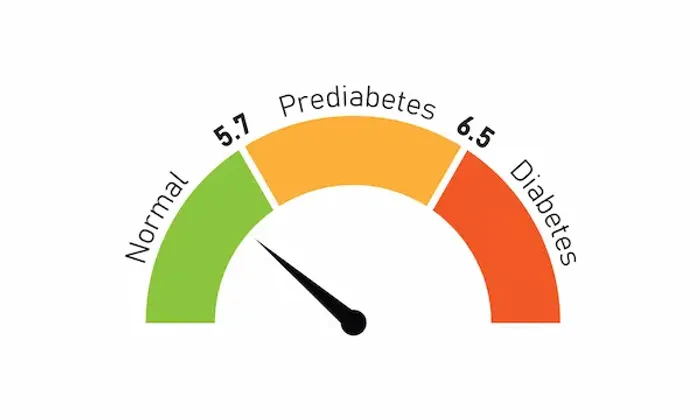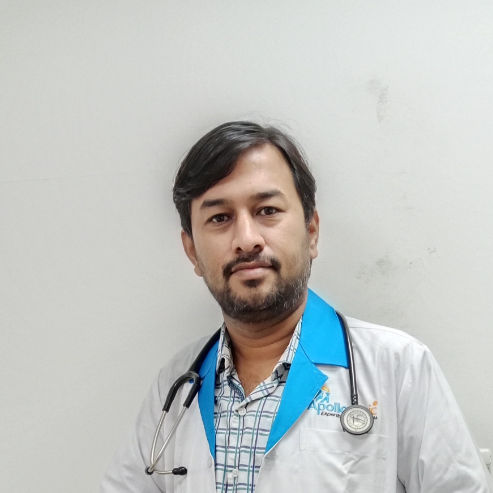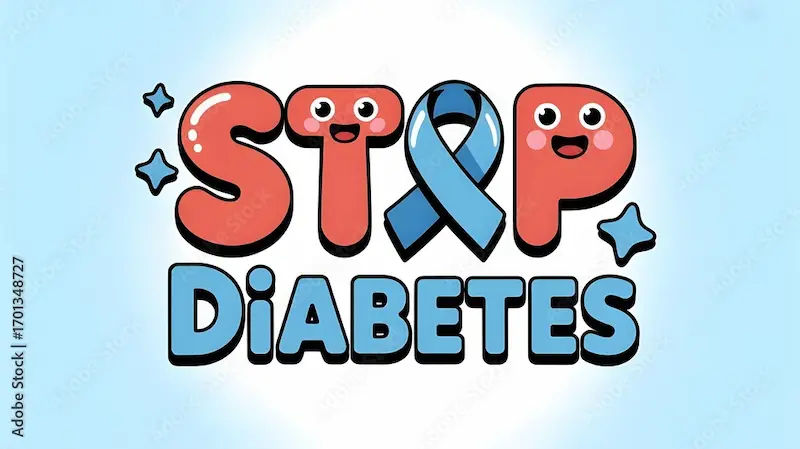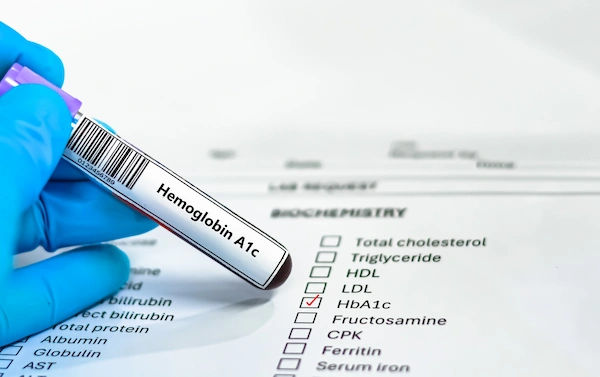Guide to Glucose Tolerance Test Normal Range
Complete guide to glucose tolerance test normal ranges for adults and pregnancy. Learn how to prepare, interpret OGTT results, understand gestational diabetes cutoffs, and follow-up care.

Written by Dr. Mohammed Kamran
Reviewed by Dr. Shaik Abdul Kalam MD (Physician)
Last updated on 26th Oct, 2025

Introduction
If your doctor has ordered a glucose tolerance test, you’re likely wondering what the numbers mean and where the “normal range” sits. The glucose tolerance test (often called the OGTT) checks how your body handles sugar after you drink a measured dose of glucose. It’s a cornerstone test for diagnosing prediabetes, diabetes, and gestational diabetes in pregnancy. In this guide, we’ll demystify the glucose tolerance test normal range for adults and pregnancy, show you how to prepare, and explain what can skew results. You’ll also see practical examples, mg/dL-to-mmol/L conversions, and how OGTT compares to A1C and fasting blood sugar. Whether you’re taking the test to screen for diabetes, checking on symptoms, or preparing for a pregnancy visit, this step-by-step guide will help you feel confident about the process and your numbers. If your results are out of range, we’ll cover next steps and when to seek care.
What Is a Glucose Tolerance Test (OGTT)?
Here's what you need to know about the test:
The oral glucose tolerance test measures how your blood sugar changes after a controlled sugar load. Typically, you’ll have blood drawn after an overnight fast, drink a solution with 75 grams of glucose, and have your blood checked again—often at the two-hour mark. Your fasting and two-hour values help determine whether your glucose processing is normal, borderline (prediabetes), or in the diabetes range.
The 75-gram oral glucose challenge explained
- Dose: 75 g of anhydrous glucose dissolved in water, consumed within 5 minutes.
- Timeline: Blood sampled at baseline (fasting) and at 2 hours; some clinics add a 1-hour draw.
- Why this matters: The 2-hour value is particularly sensitive for detecting impaired glucose tolerance (an early warning sign that raises future diabetes and heart risk).
What the OGTT measures and why it matters
- OGTT captures how quickly your body clears glucose from the bloodstream.
- It can detect problems earlier than A1C in some groups (for example, certain ethnicities, pregnancy, or conditions where red blood cell turnover affects A1C).
- It remains the gold standard for diagnosing gestational diabetes.
Consult Top Specialists
Who Needs the Test and When?
Here's who is recommended to take the test:
OGTT isn’t ordered for everyone, but it’s crucial in specific settings.
Screening for diabetes and prediabetes
- Adults with risk factors (overweight, family history, sedentary lifestyle, high blood pressure, high triglycerides or low
HDL, history of gestational diabetes) may be tested with FPG, A1C, or OGTT. - OGTT is particularly helpful if A1C and fasting glucose are borderline but symptoms or risk factors are present.
Pregnancy screening for gestational diabetes
- Universal screening is recommended during pregnancy, often between 24–28 weeks.
- Depending on your clinic, you’ll have a one-step 75 g OGTT or a two-step approach (a 50 g screening test followed by a 100 g diagnostic test if the screen is positive).
Special indications (PCOS, CF, medications)
- PCOS: An OGTT can uncover impaired glucose tolerance early, even with a normal A1C.
- Cystic fibrosis: OGTT is used to diagnose CF-related diabetes (CFRD), which relies on the 2-hour value ≥200 mg/dL (11.1 mmol/L).
- Medications: Long-term steroids or some antipsychotics can raise glucose and prompt OGTT for monitoring.
How to Prepare and What to Expect on Test Day?
Here's how to get ready for an accurate test:
A good result starts with good preparation. Preparation affects accuracy more than most people realise.
3-day diet, fasting windows, and hydration
- Eat your usual diet with at least 150 g carbohydrates per day for three days before testing (don’t “low-carb” beforehand;
it can artificially worsen results). - Fast 8–12 hours before the test (water is okay). Avoid caffeine and nicotine on the morning of the test.
- Stay hydrated; dehydration can falsely elevate glucose.
Step-by-step timeline during the test
- Check-in and fasting blood draw.
- Drink the 75 g glucose solution within 5 minutes.
- Sit quietly for the duration; do not eat, exercise, or leave the facility.
- Blood draw at 2 hours (some protocols add a 1-hour draw).
- Total time: about 2–3 hours.
Common side effects and safety
- Possible nausea, lightheadedness, or headache shortly after drinking the solution.
- Rarely, vomiting occurs; the test may need to be rescheduled.
- The test is safe in pregnancy and recommended at 24–28 weeks.
Glucose Tolerance Test Normal Range for Non‑Pregnant Adults
Here's the standard reference for adults:
Normal, prediabetes, and diabetes thresholds (2-hour values)
- Fasting plasma glucose (FPG)
- Normal: under 100 mg/dL (5.6 mmol/L)
- Prediabetes: 100–125 mg/dL (5.6–6.9 mmol/L)
- Diabetes: 126 mg/dL (7.0 mmol/L) or higher (on two separate days or with classic symptoms)
- 2-hour OGTT after 75 g
- Normal range: under 140 mg/dL (7.8 mmol/L)
- Prediabetes (impaired glucose tolerance): 140–199 mg/dL (7.8–11.0 mmol/L)
- Diabetes: 200 mg/dL (11.1 mmol/L) or higher
Fasting values and what “borderline” means
- You can have a normal fasting value but an elevated 2-hour value; this is impaired glucose tolerance and carries increased risk for type 2 diabetes and cardiovascular disease.
- If your results are borderline, repeat testing or alternative tests (A1C) may be recommended.
mg/dL to mmol/L conversion quick chart
- To convert mg/dL to mmol/L, divide by 18.
- 100 mg/dL ≈ 5.6 mmol/L
- 140 mg/dL ≈ 7.8 mmol/L
- 200 mg/dL ≈ 11.1 mmol/L
Gestational Diabetes: Normal Values and Diagnostic Cutoffs
Here's what is considered normal in pregnancy:
Gestational diabetes mellitus (GDM) is diagnosed using pregnancy-specific thresholds that are lower than non-pregnant standards, because even modest elevations can affect the baby.
One-step 75 g OGTT (IADPSG/ADA criteria)
Diagnostic if any one value meets or exceeds:
- Fasting: 92 mg/dL (5.1 mmol/L)
- 1-hour: 180 mg/dL (10.0 mmol/L)
- 2-hour: 153 mg/dL (8.5 mmol/L)
Two-step approach (50 g screen + 100 g diagnostic)
- Step 1: 50 g glucose challenge (non-fasting). If 1-hour value is high (thresholds vary, commonly 130–140 mg/dL or 7.2–7.8 mmol/L), proceed to step 2.
- Step 2: 100 g OGTT (fasting). Carpenter–Coustan cutoffs; GDM diagnosed if two or more are met or exceeded:
- Fasting: 95 mg/dL (5.3 mmol/L)
- 1-hour: 180 mg/dL (10.0 mmol/L)
- 2-hour: 155 mg/dL (8.6 mmol/L)
- 3-hour: 140 mg/dL (7.8 mmol/L)
What your numbers mean for pregnancy care
- Meeting or exceeding thresholds typically leads to nutrition counselling, glucose monitoring, and sometimes medication or insulin.
- Tight control reduces risks like high birth weight, birth complications, and preeclampsia.
Consult Top Specialists
Interpreting Your Results with Real-Life Examples
Here's how to read typical reports:
Sample reports and how to read them
- Example A (non-pregnant):
- Fasting: 96 mg/dL (5.3 mmol/L)
- 2-hour: 165 mg/dL (9.2 mmol/L)
- Interpretation: Impaired glucose tolerance (prediabetes). Action: lifestyle changes, consider metformin if high-risk, retest in 3–12 months.
- Example B (pregnancy, one-step 75 g):
- Fasting: 89 mg/dL
- 1-hour: 184 mg/dL
- 2-hour: 146 mg/dL
- Interpretation: Gestational diabetes (1-hour ≥180). Action: start GDM care plan.
When results conflict with how you feel
- If you have classic symptoms (excess thirst, urination, unexplained weight loss) but results are borderline, doctors may repeat testing or add A1C and random glucose.
- Day-to-day variability is real: illness, poor sleep, or stress can bump results. A borderline test may be confirmed on a different day.
What Can Skew the Results (And How to Avoid It)?
Here's what can affect accuracy:
Medications, illness, sleep, and stress
- Medications that can raise glucose: steroids (prednisone), some diuretics (thiazides), beta-blockers, certain
antipsychotics, oral contraceptives. - Acute illness, infections, or recent surgery can elevate glucose; reschedule if you’re unwell.
- Poor sleep and high stress can nudge results higher.
Activity, smoking, caffeine, and dehydration
- Exercise right before or during the test can lower glucose artificially; sit quietly during the test window.
- Nicotine and caffeine may affect glucose and insulin responses; skip them until after your final draw.
- Dehydration concentrates blood glucose; drink water as usual before your fast.
OGTT vs A1C vs Fasting Sugar: Which Test Is Best?
Here's how the tests differ:
Pros and cons of each test
- OGTT (2-hour, 75 g)
- Pros: Detects impaired glucose tolerance; gold standard in pregnancy; sensitive in early dysglycemia.
- Cons: Time-consuming; affected by short-term variables; requires fasting and a clinic visit.
- A1C (average 2–3 months)
- Pros: No fasting; reflects long-term control; widely used.
- Cons: Can be inaccurate in anaemia, kidney disease, pregnancy, or haemoglobin variants.
- Fasting plasma glucose (FPG)
- Pros: Quick, inexpensive.
- Cons: Misses some post-meal spikes; less sensitive for early IGT.
When doctors prefer one test over another
- Pregnancy: OGTT preferred by guidelines.
- Suspected early diabetes with normal A1C: OGTT to detect post-meal spikes.
- Monitoring therapy: A1C plus home glucose checks.
- Screening large populations: A1C or FPG for practicality, with OGTT if results are unclear.
Special Situations and Populations
Here's how ranges differ across groups:
Children and adolescents
- Diagnostic thresholds mirror adult cutoffs for FPG and OGTT. However, paediatric specialists may favour OGTT
when obesity, acanthosis nigricans, or family history is present. - Early detection matters: impaired glucose tolerance in teens predicts later type 2 diabetes.
PCOS, cystic fibrosis-related diabetes, post-bariatric
- PCOS: OGTT is often recommended at diagnosis and periodically thereafter, even with normal A1C, due to increased insulin resistance.
- Cystic fibrosis-related diabetes (CFRD): Diagnosed by 2-hour glucose ≥200 mg/dL on OGTT; fasting metrics are less reliable in CF.
- Post-bariatric: Early after surgery, rapid absorption can cause atypical glucose curves; your care team may adjust timing or use continuous glucose monitoring to evaluate reactive hypoglycaemia.
Reactive hypoglycemia and late drops
- Some people experience a low blood sugar dip after the peak. Discuss symptoms (sweats, shakiness) with your clinician; it doesn’t change diabetes diagnosis but may guide diet.
After the Test: Next Steps, Prevention, and Treatment
Here's how to act on your results:
Lifestyle strategies for impaired glucose tolerance
- Nutrition: Emphasise fibre, non-starchy vegetables, lean proteins, and healthy fats; reduce refined carbs and sugary
drinks. - Activity: Aim for 150+ minutes of moderate exercise weekly plus 2–3 sessions of resistance training.
- Weight: Even a 5–7% weight loss can markedly lower the risk of progressing to type 2 diabetes.
- Sleep and stress: Both influence insulin sensitivity; prioritise routines that improve them.
Monitoring plan and follow-up labs
- Prediabetes: Retest in 3–12 months; consider A1C every 3–6 months if at higher risk.
- Diabetes: Begin comprehensive management with your clinician (nutrition, glucose monitoring, medications as needed).
- Pregnancy (GDM): Start monitoring immediately; post-partum OGTT at 4–12 weeks to check resolution.
If symptoms persist or your results are concerning, consult a doctor online with Apollo 24|7 for further evaluation. For follow-up tests like HbA1c or fasting glucose, Apollo 24|7 offers convenient home collection services in many locations.
Consult Top Specialists
Conclusion
Understanding the glucose tolerance test normal range helps you move from uncertainty to action. For adults, a 2-hour value under 140 mg/dL is normal, 140–199 mg/dL flags prediabetes, and 200 mg/dL or above indicates diabetes. In pregnancy, thresholds are lower, and even one abnormal value on the one-step 75 g OGTT can diagnose gestational diabetes. Preparation—like maintaining a normal-carb diet before the test and fasting properly—plays a major role in getting accurate numbers. If your results fall into the impaired range, this is your opportunity to intervene: smart nutrition, regular activity, better sleep, and stress management can make a measurable difference. When needed, your clinician may add A1C or fasting tests to complete the picture. If you have symptoms or your condition doesn’t improve after trying evidence-based steps, consult a doctor online with Apollo 24|7 for personalised guidance. For follow-up labs such as HbA1c or fasting glucose, Apollo 24|7 offers convenient home collection in many areas. The sooner you act on your numbers, the more options you’ll have—and the better you’ll feel.
Consult Top Specialists

Dr. Sridevi Paladugu
Diabetologist
14 Years • MD, DM (Endocrinology)
Hyderabad
Apollo Hospitals Jubilee Hills, Hyderabad
(275+ Patients)
Dr. Preeti Kathail
General Physician/ Internal Medicine Specialist
17 Years • MBBS, PGDHHM
Bangalore
Apollo Clinic Bellandur, Bangalore

Dr.vishwanath S
Endocrinologist
8 Years • M.B.B.S, MD- INTERNAL MEDICINE, DM Endocrinology
Bengaluru
Apollo Medical Center, Marathahalli, Bengaluru

Dr Abilash Jain
General Physician/ Internal Medicine Specialist
12 Years • MBBS,DNB(FM),MNAMS,FIAMS,CCGMG(GERIATRICS),DGM (GERIATRICS),PGCD(DIABETES,BOSTON UNIVERSITY),FID(DIABETICS UK)CCEPC(PALLIATIVE CARE),CCCC(CRITICAL CARE)
Visakhapatnam
Apollo Clinic Vizag, Visakhapatnam

Dr. Mani Deepthi Dasari
Endocrinologist
8 Years • MBBS, MD(Internal medicine), DM (Endocrinology)
Bengaluru
Apollo Sugar Clinics, Sheshadripuram, Bengaluru
(50+ Patients)
Consult Top Specialists

Dr. Sridevi Paladugu
Diabetologist
14 Years • MD, DM (Endocrinology)
Hyderabad
Apollo Hospitals Jubilee Hills, Hyderabad
(275+ Patients)
Dr. Preeti Kathail
General Physician/ Internal Medicine Specialist
17 Years • MBBS, PGDHHM
Bangalore
Apollo Clinic Bellandur, Bangalore

Dr.vishwanath S
Endocrinologist
8 Years • M.B.B.S, MD- INTERNAL MEDICINE, DM Endocrinology
Bengaluru
Apollo Medical Center, Marathahalli, Bengaluru

Dr Abilash Jain
General Physician/ Internal Medicine Specialist
12 Years • MBBS,DNB(FM),MNAMS,FIAMS,CCGMG(GERIATRICS),DGM (GERIATRICS),PGCD(DIABETES,BOSTON UNIVERSITY),FID(DIABETICS UK)CCEPC(PALLIATIVE CARE),CCCC(CRITICAL CARE)
Visakhapatnam
Apollo Clinic Vizag, Visakhapatnam

Dr. Mani Deepthi Dasari
Endocrinologist
8 Years • MBBS, MD(Internal medicine), DM (Endocrinology)
Bengaluru
Apollo Sugar Clinics, Sheshadripuram, Bengaluru
(50+ Patients)
Consult Top Specialists

Dr. Sridevi Paladugu
Diabetologist
14 Years • MD, DM (Endocrinology)
Hyderabad
Apollo Hospitals Jubilee Hills, Hyderabad
(275+ Patients)
Dr. Preeti Kathail
General Physician/ Internal Medicine Specialist
17 Years • MBBS, PGDHHM
Bangalore
Apollo Clinic Bellandur, Bangalore

Dr.vishwanath S
Endocrinologist
8 Years • M.B.B.S, MD- INTERNAL MEDICINE, DM Endocrinology
Bengaluru
Apollo Medical Center, Marathahalli, Bengaluru

Dr Abilash Jain
General Physician/ Internal Medicine Specialist
12 Years • MBBS,DNB(FM),MNAMS,FIAMS,CCGMG(GERIATRICS),DGM (GERIATRICS),PGCD(DIABETES,BOSTON UNIVERSITY),FID(DIABETICS UK)CCEPC(PALLIATIVE CARE),CCCC(CRITICAL CARE)
Visakhapatnam
Apollo Clinic Vizag, Visakhapatnam

Dr. Mani Deepthi Dasari
Endocrinologist
8 Years • MBBS, MD(Internal medicine), DM (Endocrinology)
Bengaluru
Apollo Sugar Clinics, Sheshadripuram, Bengaluru
(50+ Patients)
More articles from Diabetes
Frequently Asked Questions
What is a normal 2-hour glucose tolerance test result for adults?
Under 140 mg/dL (7.8 mmol/L) is considered normal. Between 140–199 mg/dL indicates impaired glucose tolerance (prediabetes), and 200 mg/dL or higher suggests diabetes.
What are normal glucose tolerance test values in pregnancy?
One-step 75 g OGTT: any one of these at or above the cutoff diagnoses GDM—fasting ≥92 mg/dL, 1-hour ≥180 mg/dL, 2-hour ≥153 mg/dL.
Can I drink water during a glucose tolerance test?
Yes, plain water is allowed unless your clinic advises otherwise. Avoid coffee, tea, and nicotine until the test is complete.
How do OGTT and A1C differ?
OGTT measures how your body handles a sugar load today (post-meal response). A1C reflects your average blood sugar over the past 2–3 months. OGTT is more sensitive for impaired glucose tolerance and in pregnancy.
Can I do an OGTT at home?
The standard OGTT requires controlled glucose dosing and timed blood draws in a clinic. For follow-up tests like HbA1c or fasting glucose, home collection services are often available through providers like Apollo 24|7.


